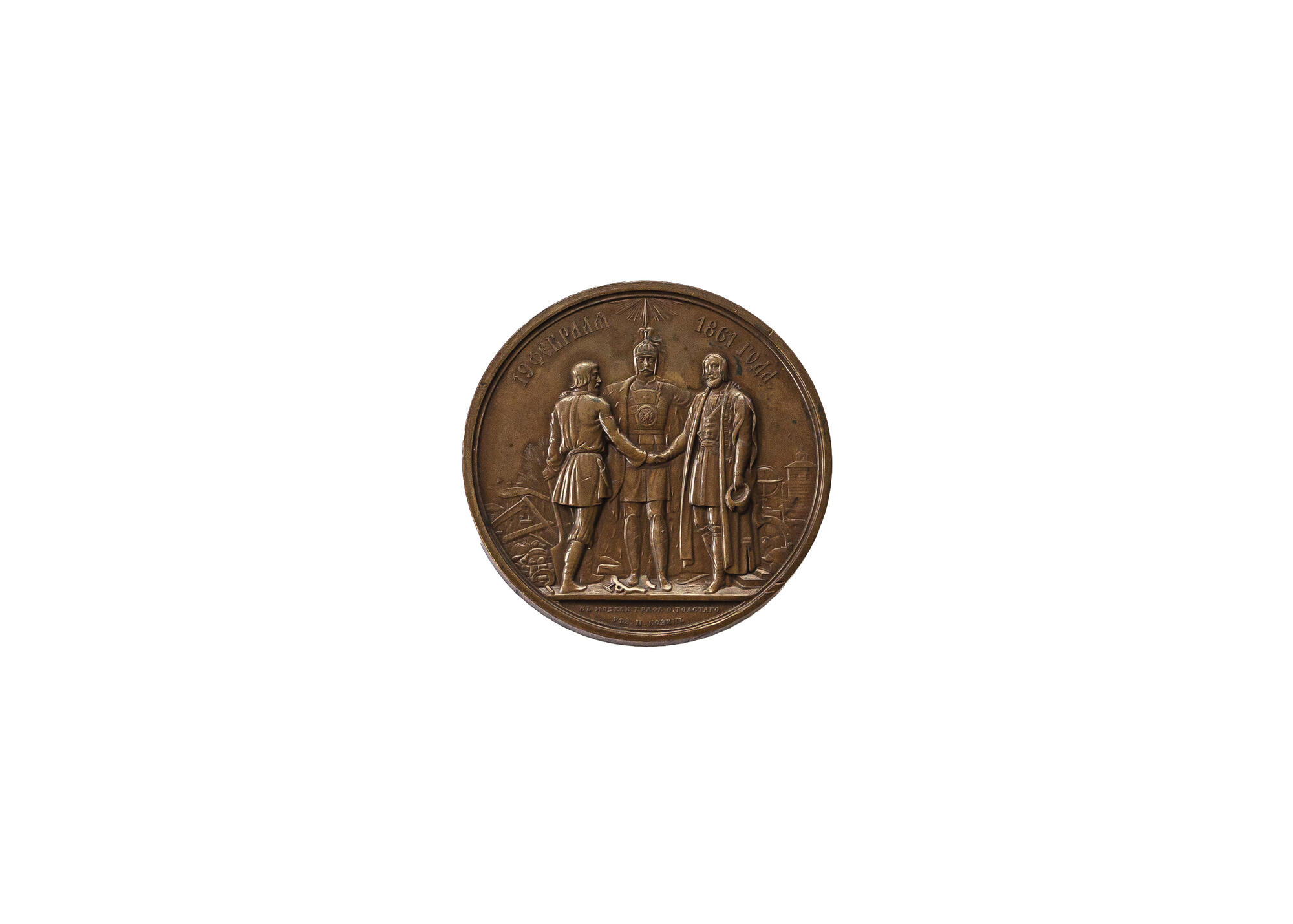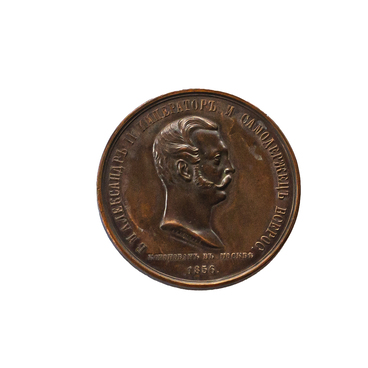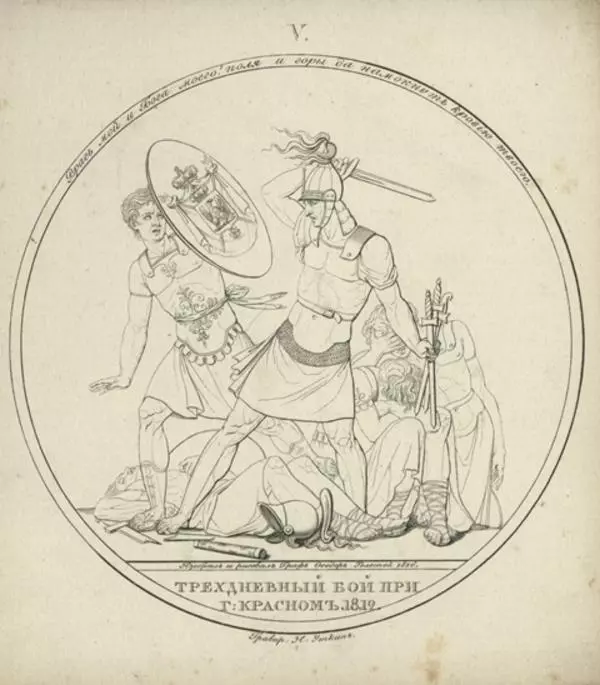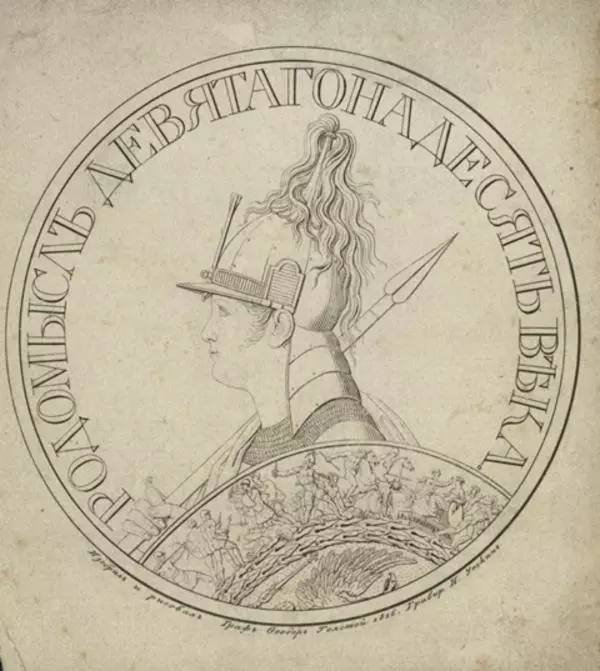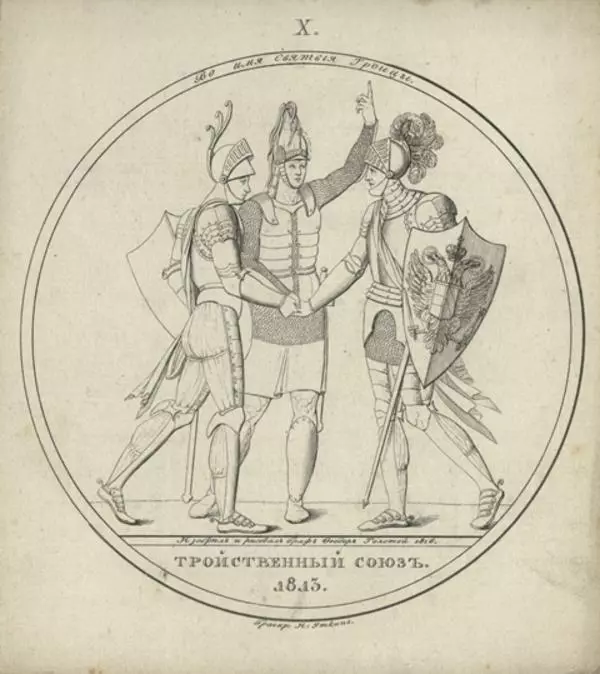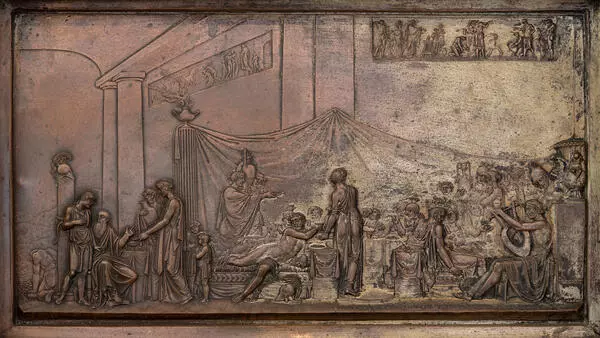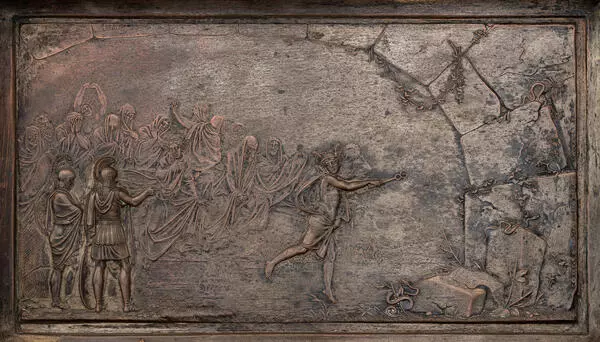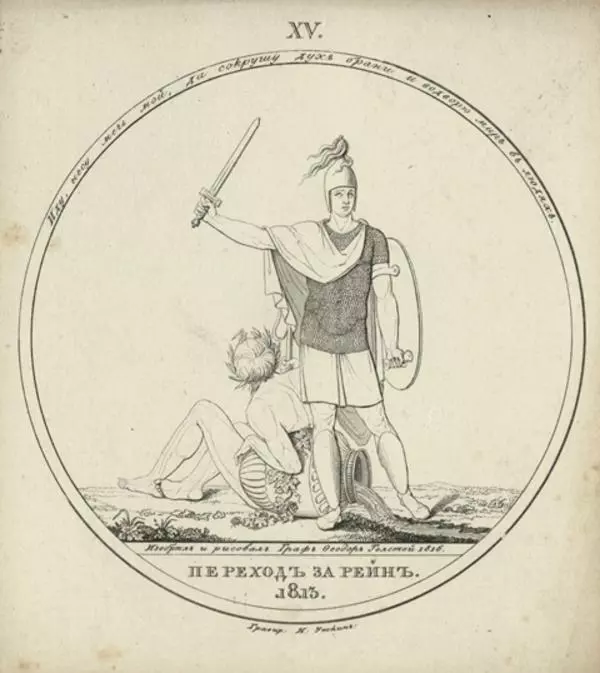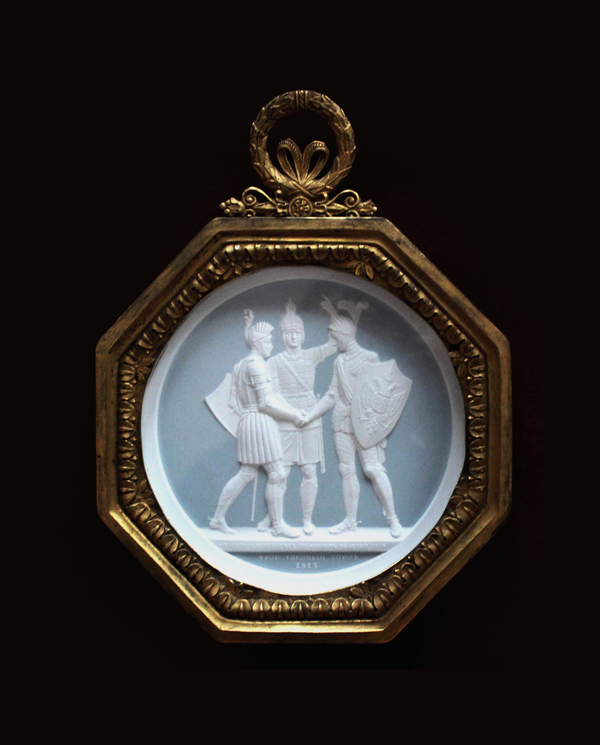The commemorative medal is dedicated to the most important reform of the state, which was conducted by Emperor Alexander II — the abolition of serfdom.
The model of the medal was created by the famous Russian painter, drafter, and sculptor, Vice-President of the Academy of Arts, Fyodor Tolstoy. His student, the painter-medallist Nikolay Kozin at the Saint Petersburg Mint, made the medal according to Tolstoy’s model.
The medal is made of bronze, with 68 millimeters in diameter and 6 mm thick. The obverse depicts Emperor Alexander II in a helmet, chain mail, and armor, with a sword at his left hip and the Porphyra on his shoulders. He holds by the shoulders a nobleman dressed as a boyar and a peasant, who are shaking hands with each other. A broken oxbow is depicted at the feet of the Emperor. To the left behind the peasant there are sickle, rake, scythe, shovel, basket with fruit, and beehives with bees. Books, helmet, shield, sword, and a globe are depicted to the right of the nobleman. The date is stamped at the top: “February 19, 1861”. Underneath the trim there is writing: “From the model of Count F. Tolstoy, artisan N. Kozin”.
The reverse depicts an eight-pointed cross. The first lines of the manifesto on the abolition of serfdom are carved in a circle:
The model of the medal was created by the famous Russian painter, drafter, and sculptor, Vice-President of the Academy of Arts, Fyodor Tolstoy. His student, the painter-medallist Nikolay Kozin at the Saint Petersburg Mint, made the medal according to Tolstoy’s model.
The medal is made of bronze, with 68 millimeters in diameter and 6 mm thick. The obverse depicts Emperor Alexander II in a helmet, chain mail, and armor, with a sword at his left hip and the Porphyra on his shoulders. He holds by the shoulders a nobleman dressed as a boyar and a peasant, who are shaking hands with each other. A broken oxbow is depicted at the feet of the Emperor. To the left behind the peasant there are sickle, rake, scythe, shovel, basket with fruit, and beehives with bees. Books, helmet, shield, sword, and a globe are depicted to the right of the nobleman. The date is stamped at the top: “February 19, 1861”. Underneath the trim there is writing: “From the model of Count F. Tolstoy, artisan N. Kozin”.
The reverse depicts an eight-pointed cross. The first lines of the manifesto on the abolition of serfdom are carved in a circle:
